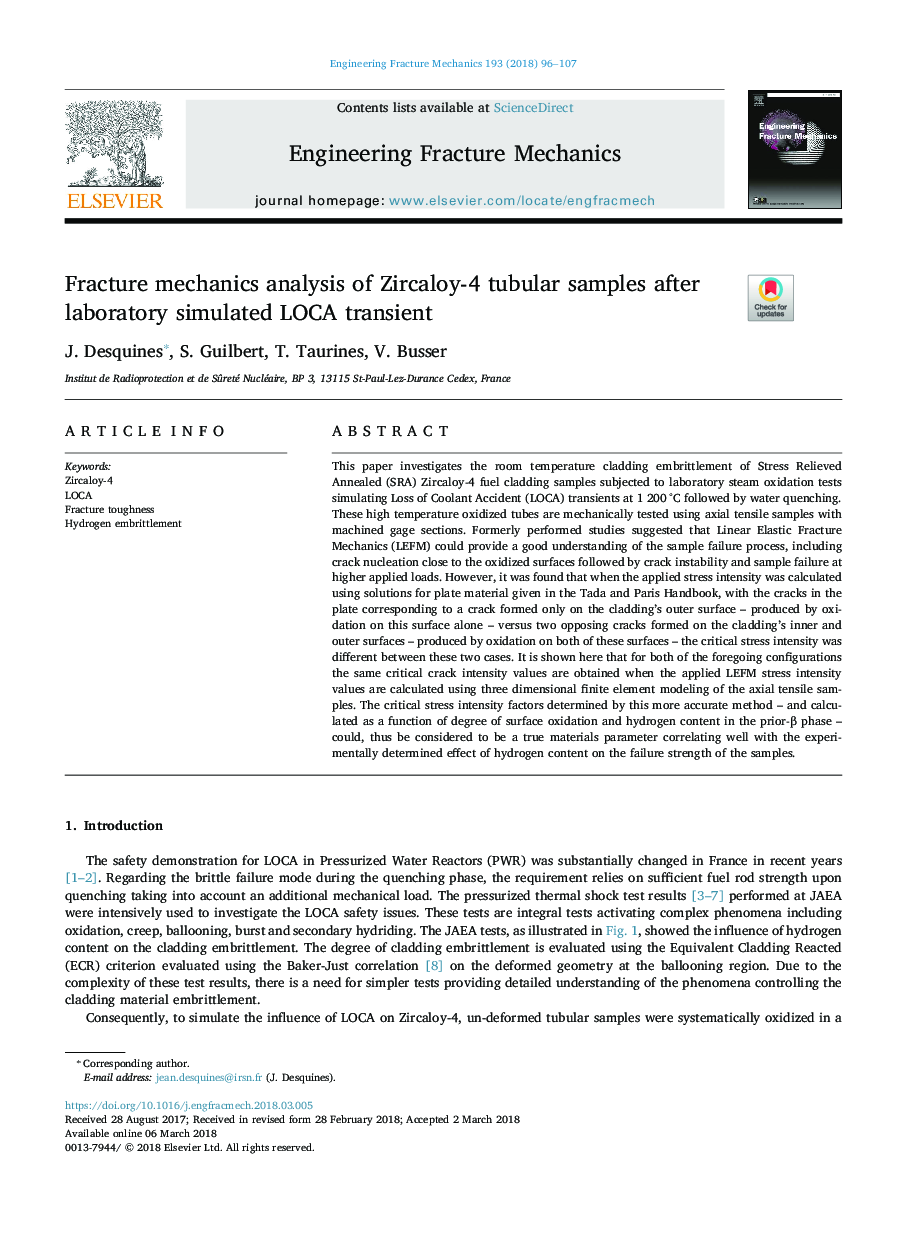| Article ID | Journal | Published Year | Pages | File Type |
|---|---|---|---|---|
| 7168916 | Engineering Fracture Mechanics | 2018 | 12 Pages |
Abstract
This paper investigates the room temperature cladding embrittlement of Stress Relieved Annealed (SRA) Zircaloy-4 fuel cladding samples subjected to laboratory steam oxidation tests simulating Loss of Coolant Accident (LOCA) transients at 1 200â¯Â°C followed by water quenching. These high temperature oxidized tubes are mechanically tested using axial tensile samples with machined gage sections. Formerly performed studies suggested that Linear Elastic Fracture Mechanics (LEFM) could provide a good understanding of the sample failure process, including crack nucleation close to the oxidized surfaces followed by crack instability and sample failure at higher applied loads. However, it was found that when the applied stress intensity was calculated using solutions for plate material given in the Tada and Paris Handbook, with the cracks in the plate corresponding to a crack formed only on the cladding's outer surface - produced by oxidation on this surface alone - versus two opposing cracks formed on the cladding's inner and outer surfaces - produced by oxidation on both of these surfaces - the critical stress intensity was different between these two cases. It is shown here that for both of the foregoing configurations the same critical crack intensity values are obtained when the applied LEFM stress intensity values are calculated using three dimensional finite element modeling of the axial tensile samples. The critical stress intensity factors determined by this more accurate method - and calculated as a function of degree of surface oxidation and hydrogen content in the prior-β phase - could, thus be considered to be a true materials parameter correlating well with the experimentally determined effect of hydrogen content on the failure strength of the samples.
Related Topics
Physical Sciences and Engineering
Engineering
Mechanical Engineering
Authors
J. Desquines, S. Guilbert, T. Taurines, V. Busser,
